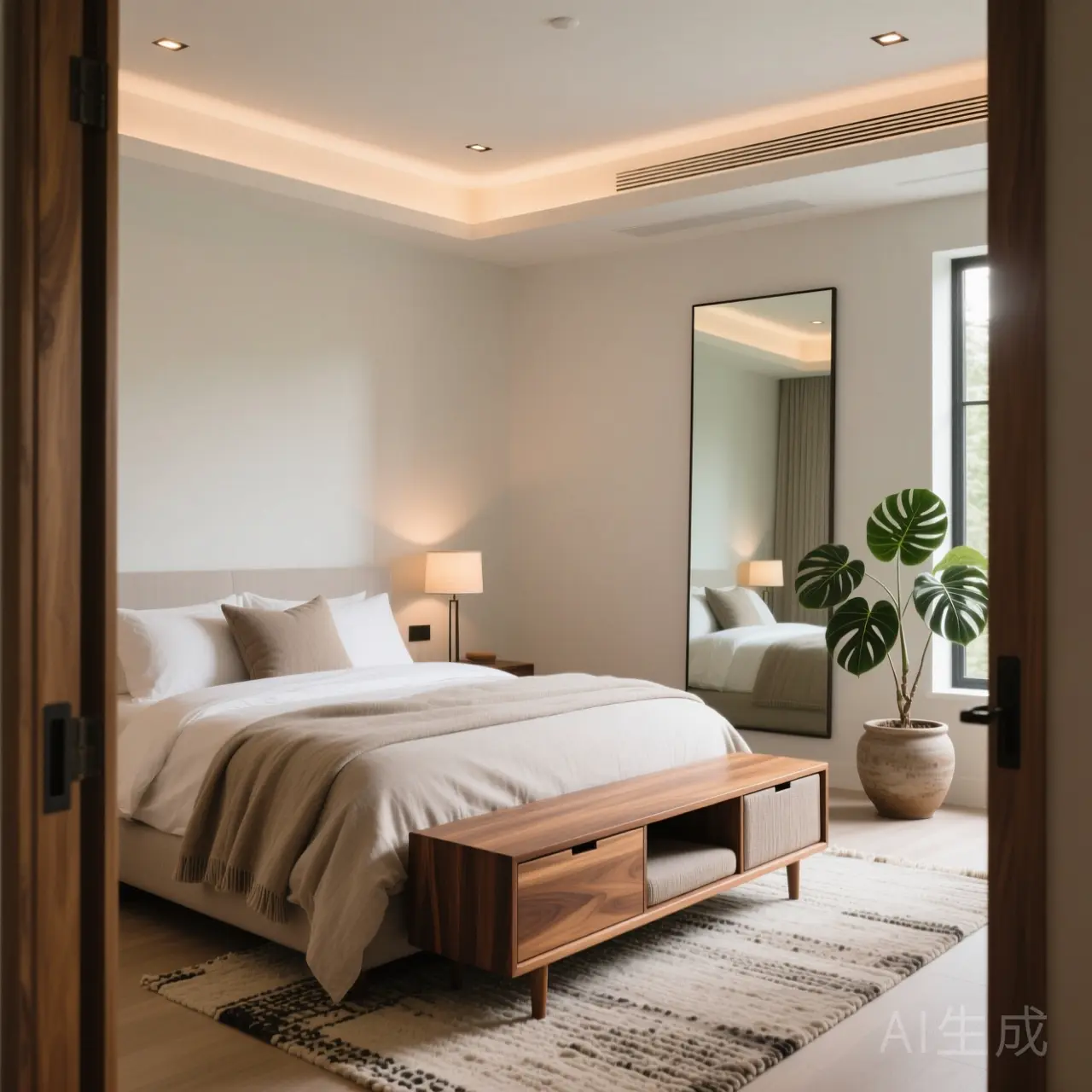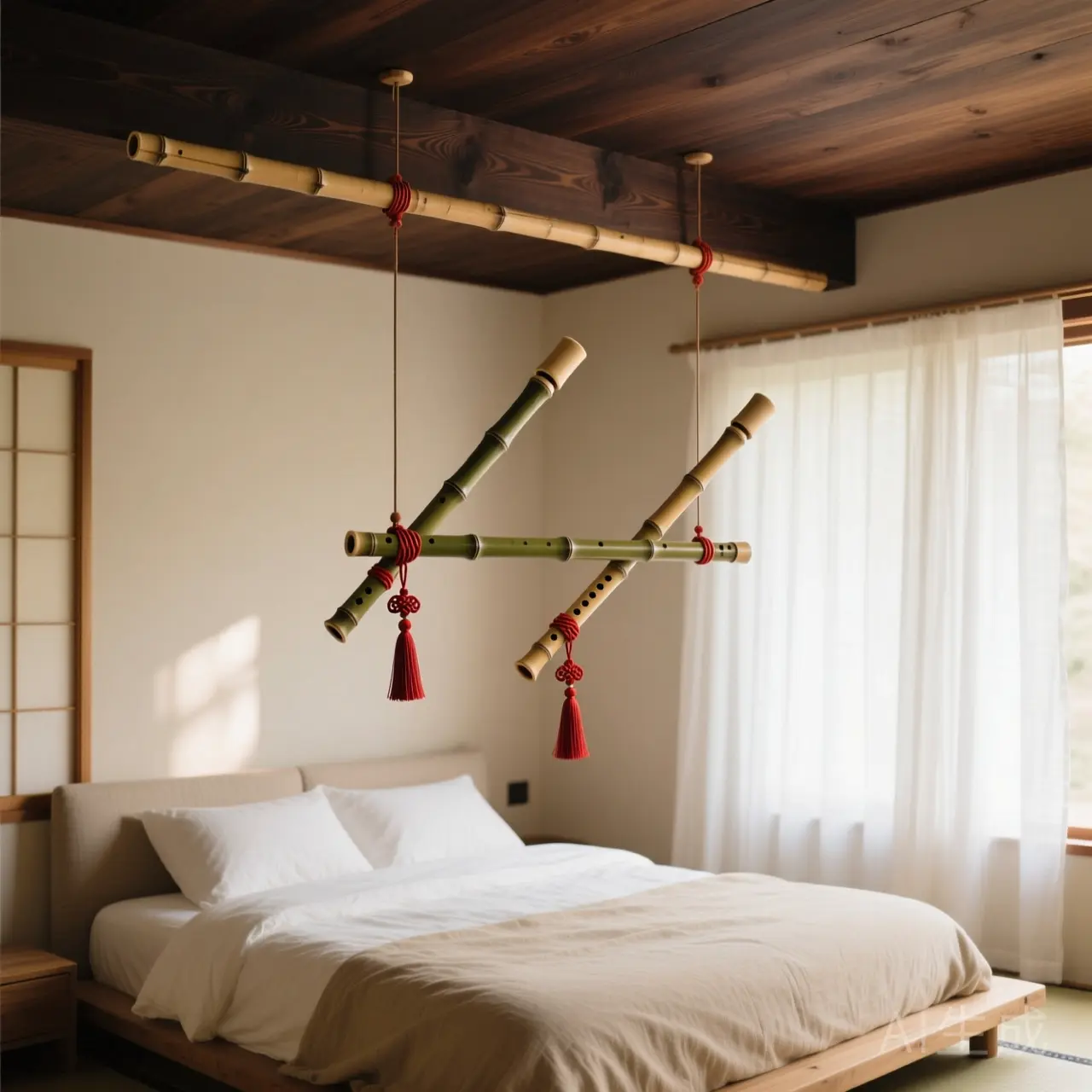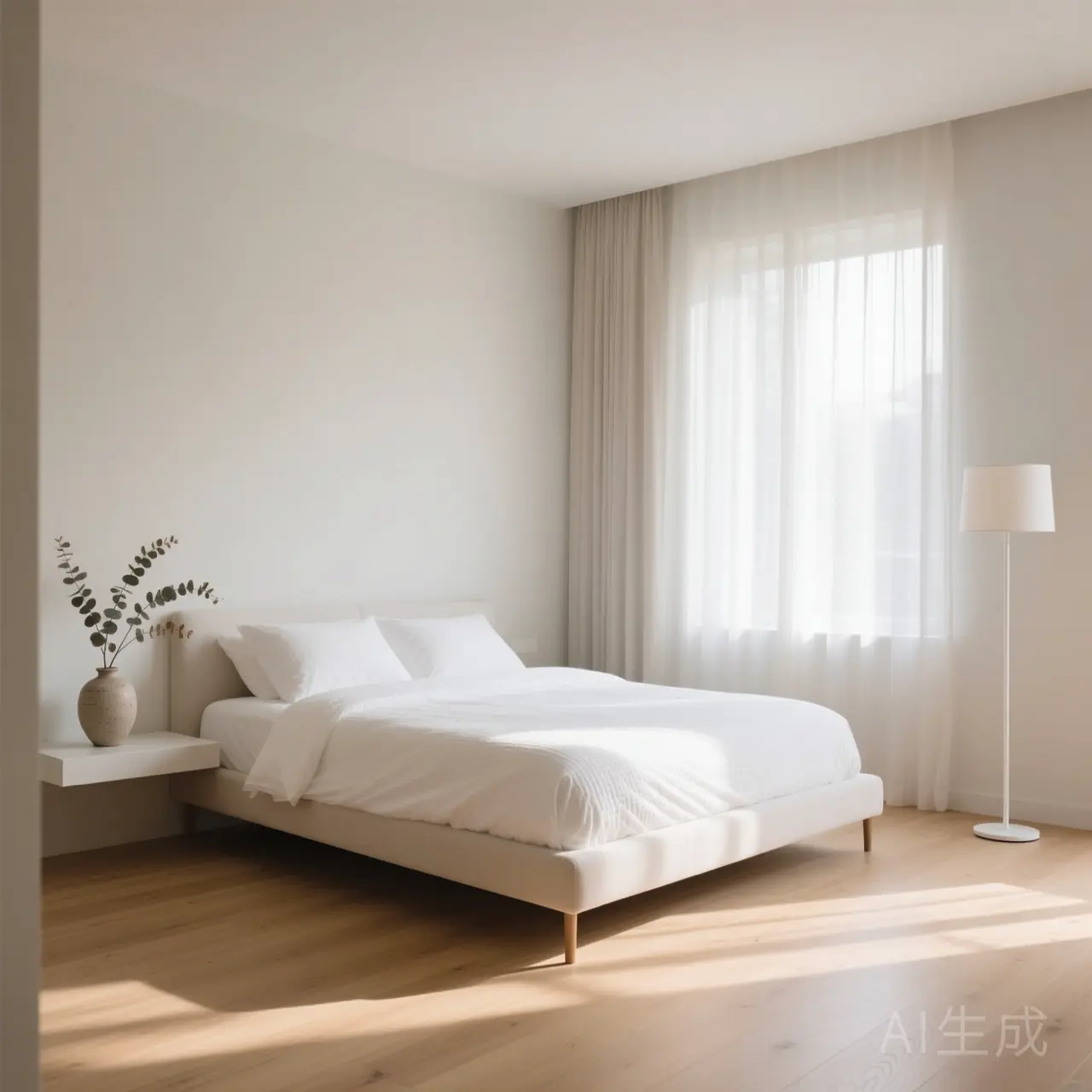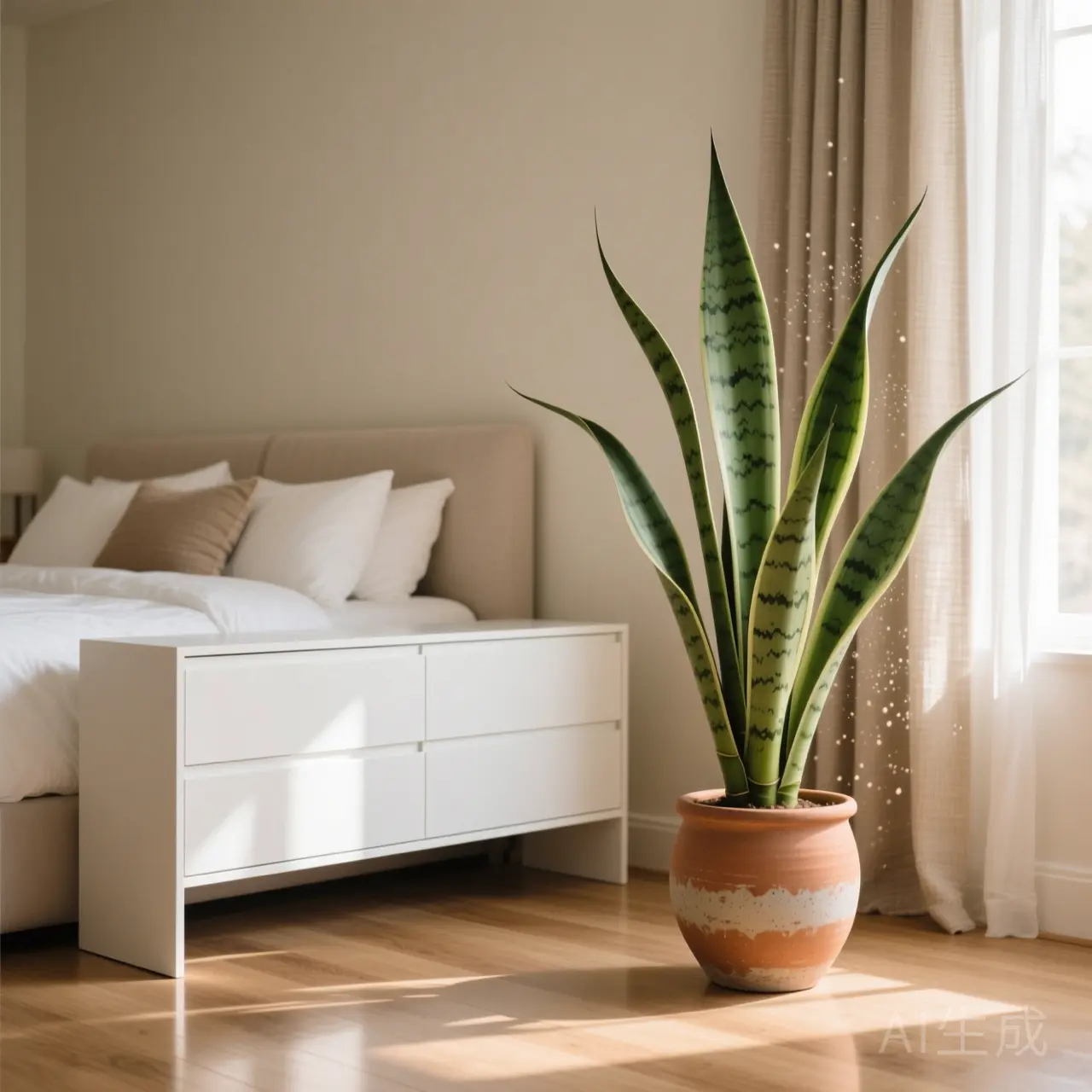10 Common Feng Shui Bedroom Mistakes to Avoid
Avoid these 10 common feng shui bedroom mistakes that can impact your sleep, health, and relationships. Learn easy, low-cost solutions to fix them today.
Your bedroom should be a sanctuary—a personal retreat for rest, romance, and rejuvenation. But what if your layout is unknowingly creating stress and draining your vital energy? Feng shui isn't about superstition; it's the ancient art of creating a space that feels supportive, harmonious, and aligned with your goals.
Often, a few small tweaks are all it takes to transform your bedroom's energy from chaotic to calm. In this guide, we'll walk through the 10 most common feng shui bedroom mistakes and provide simple, actionable solutions that you can implement today.
Mistake 1: Mirror Facing the Bed
The Mistake: A mirror is positioned directly across from or beside the bed, reflecting your sleeping self. This is a very common issue, especially with mirrored closet doors.
Why It's a Problem: In feng shui, mirrors are powerful activators that bounce energy around a room. While you sleep, your body and spirit are in a passive "yin" state of rest and repair. A mirror reflecting the bed doubles the activity in the room, disrupting this calm and leading to restless sleep. It is also believed to invite the energy of a third party into a couple's relationship.
The Fix: The simplest solution is to move the mirror to a wall that doesn't reflect the bed. If it's fixed to a closet door, you can cover it with a beautiful cloth, a decorative screen, or apply a frosted window film at night.

Mistake 2: Bed Directly Aligned with the Door
The Mistake: While lying in bed, your feet or head point directly out the bedroom door. This is famously known as the "coffin position" because it mimics how the deceased are carried out of a room.
Why It's a Problem: The door is a primary channel for energy (Chi) to rush in and out. Lying in its direct path means your own energy is constantly being hit by this flow, which is far too active and unsettling for deep, restorative sleep. This placement can leave you feeling vulnerable and insecure.
The Fix: The best option is always to move the bed. Even shifting it a foot or two to the side, so it's diagonal to the door but still has a view of it (the "command position"), makes a huge difference. If you absolutely cannot move the bed, place a sturdy piece of furniture like a storage bench or a small bookshelf at the foot of the bed to act as a buffer.
For a complete guide on this crucial topic, read our Feng Shui Bed Placement Ultimate Guide.

Mistake 3: Sleeping Under a Beam or Slanted Ceiling
The Mistake: Your bed is positioned directly under an exposed overhead beam, a ceiling fan, or a heavily slanted part of the ceiling.
Why It's a Problem: These overhead structures create a heavy, oppressive energy that can feel like a weight on you while you sleep. A beam can metaphorically "slice" the energy of the bed, potentially leading to divisions in a relationship if it runs between two partners. It can also contribute to headaches and a feeling of being mentally "stuck."
The Fix: If possible, move the bed out from under the beam. If not, you can paint the beam the same color as the ceiling to make it visually disappear. Another popular solution is to hang a piece of light fabric (a canopy) or suspend two feng shui bamboo flutes on the beam with the mouthpieces pointing up to lift the energy.

Mistake 4: Clutter and Storage Under the Bed
The Mistake: The space under your bed is filled with storage boxes, old shoes, forgotten exercise equipment, or emotional baggage like letters from an ex-partner.
Why It's a Problem: The energy in your bedroom needs to circulate freely around you as you sleep. Clutter under the bed creates stagnant, blocked energy that you are marinating in all night long. Storing items with strong emotional attachments can also subconsciously affect your dreams and current relationships.
The Fix: The best-case scenario is to keep the space under the bed completely empty. If you must use it for storage due to space constraints, only store soft, sleep-related items like clean linens, blankets, and pillows. Avoid storing anything sharp, electronic, or emotionally charged.

Mistake 5: Headboard Not Against a Solid Wall
The Mistake: Your bed has a weak or open-frame headboard (like metal bars), or it's placed against a window or in the middle of the room.
Why It's a Problem: The headboard represents support and stability in your life. A solid headboard against a solid wall provides a strong sense of backing and security, allowing you to fully relax. A bed against a window lacks this support and can lead to a feeling of insecurity and energy loss.
The Fix: Always choose a bed with a solid, sturdy headboard made of wood or upholstery. Position it firmly against the main, solid wall of the bedroom, avoiding the wall with the door on it if possible.
Mistake 6: Too Much "Yang" Energy
The Mistake: The bedroom is filled with active, "yang" energy sources. This includes exercise equipment (like a treadmill), a television, or a work desk piled high with papers.
Why It's a Problem: The bedroom's primary purpose is rest ("yin"). Introducing too many active elements creates a conflicting energy that makes it difficult for your mind to switch off. Working or exercising in your bedroom tells your brain that this is a space for activity, not rest, which can lead to insomnia.
The Fix: Ideally, remove all work and exercise equipment from the bedroom. If this isn't possible, create a clear separation. Use a decorative screen or a curtain to hide your desk or treadmill at the end of the day. This simple act of concealment signals to your subconscious that the workday is over.
Mistake 7: Sharp Corners Pointing at the Bed
The Mistake: The sharp corner of a wall, a dresser, a bookshelf, or even a bedside table is pointed directly at you while you sleep. These are known as "poison arrows" (Sha Chi).
Why It's a Problem: These sharp angles create a harsh, cutting energy that is directed at your body for hours at a time. This can manifest as physical discomfort, illness, or a general feeling of being "on edge."
The Fix: Move the piece of furniture so the corner no longer points at the bed. If you can't move it, soften the corner. You can place a thriving, leafy plant in front of it or drape a soft cloth over the edge. For bedside tables, opt for models with rounded or curved edges.

Mistake 8: Water Features or Imagery
The Mistake: The bedroom contains an actual water feature (like a small fountain) or large pieces of art depicting water (like an ocean scene).
Why It's a Problem: Water is a powerful element that represents emotion and movement. While excellent for other areas of the home, its active energy can bring worry and sorrow into the bedroom, potentially leading to financial or relationship instability.
The Fix: Relocate any fountains or water-heavy artwork to your living room or near the entrance of your home, where the active energy can help attract wealth and opportunities. In the bedroom, opt for serene images of nature, like a peaceful forest or mountains.
Mistake 9: Dead Plants or Neglected Items
The Mistake: The bedroom contains dying or dead plants, burnt-out lightbulbs, or broken items that you've been meaning to fix.
Why It's a Problem: These items represent neglected, dying, or broken energy. Having them in your personal sanctuary can subconsciously drain your own vitality and reflect a lack of self-care. It contributes to an atmosphere of stagnation.
The Fix: This is an easy one! Remove any unhealthy plants immediately. Replace burnt-out lightbulbs and either fix broken items or get rid of them. Your bedroom should only contain things that are healthy, whole, and loved.
Mistake 10: Using Strong, Stimulating Colors
The Mistake: The bedroom is painted in bright, high-energy colors like fire-engine red, bright orange, or dark, oppressive colors like black.
Why It's a Problem: Colors have a profound effect on our mood. Bright, saturated "yang" colors are stimulating and can make it very difficult to wind down and relax. Overly dark colors can contribute to feelings of depression.
The Fix: The best feng shui bedroom colors are soothing, "yin" colors that mimic skin tones and natural landscapes. Explore our guide to feng shui bedroom colors for a deeper dive into creating a restful palette. Use brighter colors as small accents in pillows or artwork, but keep the overall palette calm and muted.
Further Reading
- The Ultimate Guide to a Feng Shui Bedroom
- A Practical Guide to Feng Shui Bed Placement
- Understanding Feng Shui Rules for Mirrors in the Bedroom
Bedroom Feng Shui Self-Checklist
Now that you know the common pitfalls, review your bedroom with this quick checklist. How does your space measure up?
| Mistake Area | Check Point | My Bedroom is OK? (Yes/No) |
|---|---|---|
| 1. Mirror Placement | No mirrors reflect the bed while I'm sleeping. | |
| 2. Bed Position | My bed is not in a direct line with the bedroom door. | |
| 3. Overhead Space | There are no beams, fans, or heavy objects directly above my bed. | |
| 4. Under the Bed | The space under my bed is clean and free of clutter. | |
| 5. Headboard Support | My bed has a solid headboard placed against a solid wall. | |
| 6. Electronics | Electronics are minimal and kept away from my bedside. | |
| 7. "Poison Arrows" | No sharp corners from walls or furniture point at my bed. | |
| 8. Water Energy | There are no images of water or actual water features in the room. | |
| 9. Life Energy | The room is free of dead/dying plants and clutter. | |
| 10. Color Palette | The dominant colors are soothing and calm, not overly bright or active. |
Get a Personalized Analysis with Our AI Tool
Wondering how these principles apply to your specific room? Upload your bedroom layout to our AI Feng Shui Planner on the homepage. Get a custom report and practical suggestions in seconds.